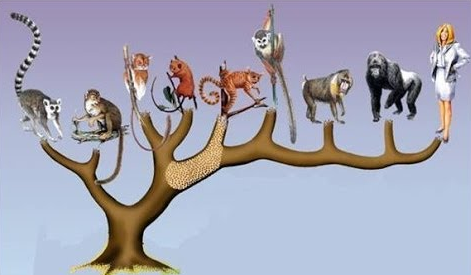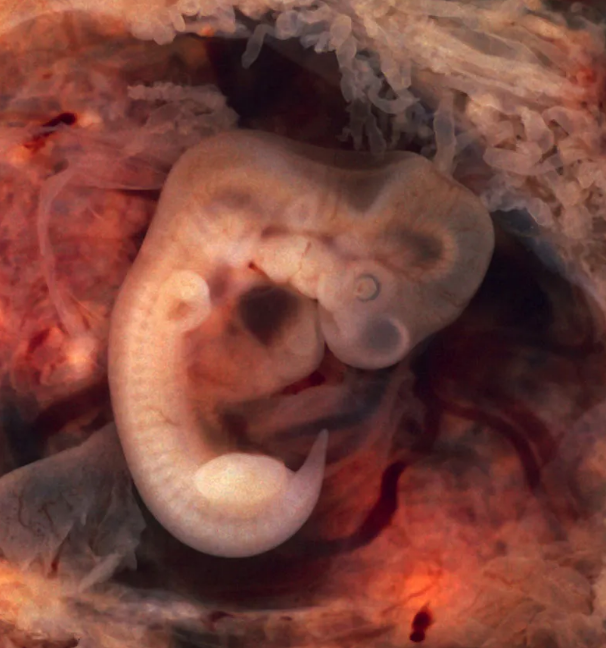Evolution, a fundamental concept in biology, encompasses various mechanisms that explain how species adapt and change over time. Among these mechanisms, atavism and retrogressive evolution stand out due to their unique implications and manifestations in the natural world. These phenomena, while related to evolutionary change, involve distinct processes that often lead to confusion without a clear explanation.
Atavism refers to the reappearance of ancestral traits in modern organisms, typically due to genetic factors that reactivate old genetic instructions. On the other hand, retrogressive evolution involves the loss of complex features over generations, usually as a survival strategy in simplified environments. By distinguishing these concepts, researchers can better understand the intricate dynamics of evolutionary development.
Both atavism and retrogressive evolution offer insights into the evolutionary history and potential future of species. They illustrate the non-linear path of evolutionary changes, showcasing how genetic variations and environmental pressures can resurrect ancient traits or simplify complex ones in pursuit of survival and reproduction.

Key Definitions
Atavism Explained
Definition of Atavism
Atavism is an evolutionary phenomenon where organisms re-exhibit traits from distant ancestors, seemingly skipping over generations of evolution. These traits often appear unexpectedly, driven by genetic factors that remain dormant until certain conditions activate them. Atavism serves as a window into the past, revealing features that were once useful but later discarded during the evolutionary process.
Examples in Humans and Animals
In humans, atavistic traits can include the emergence of tail-like structures or additional nipples, which echo our mammalian ancestors. Animals display atavisms as well; for example, horses occasionally are born with multiple toes on each hoof, a trait reminiscent of their multi-toed ancestors. Another striking instance is seen in whales, where some individuals have been found with external hind limbs, vestiges of their once terrestrial existence.
Retrogressive Evolution Explained
Definition of Retrogressive Evolution
Retrogressive evolution refers to the evolutionary process in which species lose complexity or reduce certain anatomical structures over time. This process is typically adaptive, allowing organisms to streamline their bodies and functions to better suit less complex or demanding environments.
Difference from Simple Regression
Unlike simple regression, where traits diminish due to disuse or lack of necessity, retrogressive evolution involves a more strategic adaptation to environmental pressures. It’s not just about losing traits but adapting in a way that enhances survival in specific habitats, often leading to more efficient, albeit simpler, life forms.
Evolutionary Processes
Genetic Basis of Atavism
Role of Genes and DNA
Genes play a central role in atavism. Specific genetic sequences that control the development of atavistic traits are usually suppressed or inactive in modern genomes. However, under certain genetic conditions or environmental triggers, these sequences can become reactivated, leading to the expression of ancestral features.
Mechanisms Triggering Atavistic Traits
Atavistic traits are typically triggered by:
- Genetic mutations: Random changes in DNA that reactivate dormant genes.
- Epigenetic changes: Modifications in gene expression that do not involve changes to the DNA sequence but affect how genes are turned on or off.
- Developmental anomalies: Unusual events during embryonic development that can lead to the expression of ancient traits.
Mechanisms of Retrogressive Evolution
Natural Selection and Environmental Factors
Retrogressive evolution is often driven by natural selection, where organisms that adapt to a simplified environment survive and reproduce more effectively. Environmental factors such as reduced predation, limited space, or scarce resources can encourage the loss of unnecessary traits.
Case Studies in Aquatic Organisms
Several aquatic organisms exhibit retrogressive evolution. For instance, cavefish often lose their eyesight in dark environments where vision is unnecessary. This adaptation reduces metabolic cost and avoids the developmental complexity associated with maintaining functional eyes.
Comparative Analysis
Atavism vs Retrogressive Evolution
Table Comparison of Key Characteristics
| Trait | Atavism | Retrogressive Evolution |
|---|---|---|
| Nature | Reappearance of old traits | Loss of complex traits |
| Genetic Influence | Activation of dormant genes | Reduction or loss of genetic material |
| Adaptive Value | Often neutral | Typically beneficial in specific environments |
Impact on Fitness and Survival
The impact of atavism is usually neutral but can be detrimental if the trait interferes with the organism’s current adaptations. In contrast, retrogressive evolution tends to enhance an organism’s fitness within its specific environment by reducing unnecessary energy expenditure and optimizing survival strategies.
Evolutionary Significance
Importance in Evolutionary Biology
Understanding atavism and retrogressive evolution is crucial for evolutionary biology as they provide insights into the flexibility and dynamics of genetic systems. These phenomena highlight how evolution is not always a linear progression towards complexity but can also involve simplification or the reemergence of ancient traits.
Long-Term Effects on Species and Ecosystems
The long-term effects of these evolutionary processes can significantly shape the trajectory of species and the ecosystems they inhabit. By studying these patterns, scientists can gain a deeper understanding of evolutionary adaptability and the potential future changes that species might undergo in response to environmental shifts.
Biological Examples
Instances of Atavism
Human Cases: Tail Formation, Extra Teeth
Atavism in humans can manifest in several intriguing ways. One of the more visually apparent cases is tail formation, where a human infant is born with a small, tail-like protrusion from the coccyx. This tail, generally made of fat, connective tissue, and muscles, but without vertebrae, echoes our primate ancestors who had functional tails. Another example is the development of extra teeth, an atavistic trait that refers back to ancestral humans who had larger jaws with more teeth for a tougher diet.
Animal Cases: Whales with Hind Limbs
In the animal kingdom, whales provide a fascinating case of atavism. Some whales have been discovered with rudimentary hind limbs, complete with bones that resemble legs. These limbs are a throwback to a time, millions of years ago, when whale ancestors walked on land before fully adapting to life in the water. Such examples in whales help scientists understand the evolutionary transitions from terrestrial to aquatic environments.
Retrogressive Evolution in Nature
Cave-Dwelling Species Adaptations
Cave-dwelling species exhibit some of the most striking examples of retrogressive evolution. These species, such as certain types of fish and amphibians, often lose their pigmentation and eyesight as adaptations to their perpetually dark habitats. The energy and biological resources usually spent developing and maintaining eyes and pigment can instead be diverted to other survival mechanisms, such as enhanced tactile or olfactory senses.
Insect Wing Loss Due to Island Living
Another example of retrogressive evolution is found in insects inhabiting islands, where many species have lost their ability to fly. Wing reduction or loss is particularly common in environments where strong winds make flying hazardous or where there are few predators, making flight an unnecessary escape mechanism. This adaptation reduces metabolic costs associated with wing maintenance and development.
Implications for Research
Study of Atavistic Traits
Understanding Human Developmental Anomalies
Research into atavistic traits offers significant insights into human developmental anomalies. By studying these rare occurrences, researchers can uncover underlying genetic pathways that not only explain these atavisms but also provide clues about developmental processes that can go awry, leading to congenital anomalies.
Relevance to Genetic Research and Medicine
The study of atavisms has profound implications for genetic research and medicine. Understanding how certain genes are turned on and off can lead to advancements in gene therapy, potentially allowing doctors to correct genetic disorders by manipulating gene expressions. This research also aids in the understanding of the human genome’s evolutionary history, offering a broader perspective on current human physiology and health.
Retrogressive Evolution Research
Insights into Adaptive Strategies and Survival
Research into retrogressive evolution provides valuable insights into adaptive strategies and survival mechanisms in various species. By examining how and why certain traits are lost, scientists can gain a deeper understanding of the evolutionary pressures that shape species, helping predict how organisms might adapt to future environmental changes.
Influence on Conservation and Biodiversity Efforts
Understanding retrogressive evolution is also critical for conservation and biodiversity efforts. By recognizing how species adapt to isolated or extreme environments, conservationists can better plan strategies to protect these species, particularly as their habitats undergo changes due to human activity or climate change. This knowledge helps ensure that conservation efforts are informed and effective, preserving the intricate web of biodiversity that sustains ecological balance.
Frequently Asked Questions
What is Atavism?
Atavism occurs when an organism exhibits traits that resemble those of its ancestors, often due to dormant genes becoming active. This phenomenon can provide insights into the evolutionary history of a species and the complexity of genetic inheritance.
How does Retrogressive Evolution work?
Retrogressive evolution is the process where species lose their complex traits over time, often as an adaptation to less demanding environments. This can lead to a simpler physiological structure, which may offer advantages in specific niches.
Can humans show atavistic traits?
Yes, humans can exhibit atavistic traits. Examples include the appearance of extra nipples, tail-like structures at birth, or denser body hair, which are throwbacks to our evolutionary past.
Why is retrogressive evolution significant?
Retrogressive evolution is significant because it challenges the traditional view of evolution as a process solely of complexity increase. It underscores the role of environmental pressures in shaping organisms and highlights adaptation’s role in survival.
What are examples of retrogressive evolution?
Examples of retrogressive evolution include the loss of eyes in cave-dwelling fish and the reduction of wings in some island-dwelling insects. These changes help species conserve energy and avoid predators in stable, isolated environments.
Conclusion
In exploring the differences between atavism and retrogressive evolution, we gain a deeper understanding of how evolutionary processes can shape life in both complex and simplified ways. These phenomena highlight the flexibility and adaptability of genetic mechanisms in response to environmental challenges.
Ultimately, studying atavism and retrogressive evolution not only enriches our knowledge of biology but also enhances our appreciation for the diversity of life and the dynamic processes that sustain it across generations. These insights are crucial for anyone interested in the past, present, and future trajectories of biological development.

